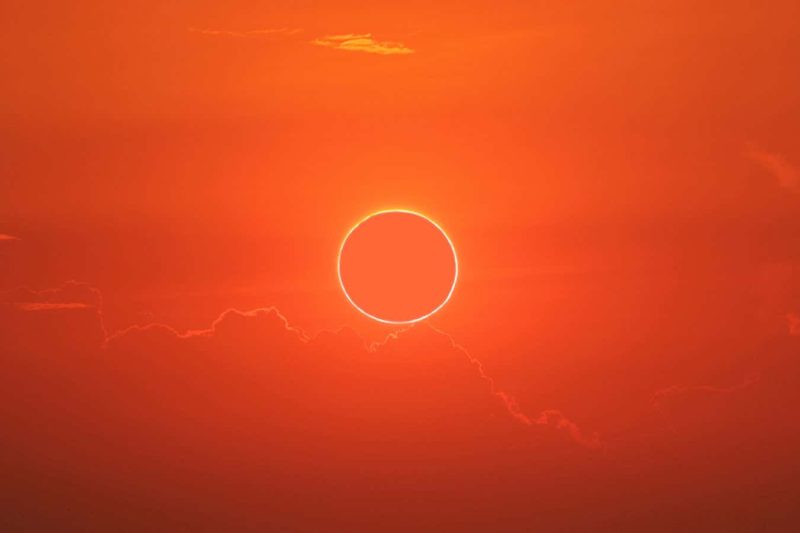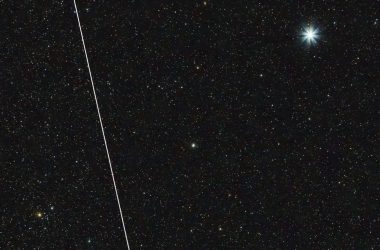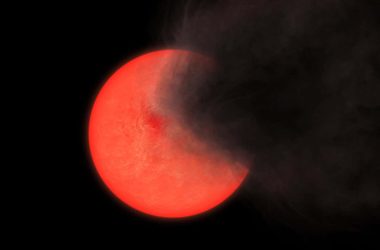An annular solar eclipse will be visible in the Americas on 14 October
Darkfoxelixir/Shutterstock
An annular solar eclipse is set to occur in North and South America on 14 October. These types of eclipses, often referred to as “ring of fire” eclipses, happen when the moon does not completely cover the sun, resulting in a bright ring being visible around the edges.
Solar eclipses occur when the moon passes between the sun and Earth, casting a shadow over a specific area as it moves. Due to the moon’s slightly varying size in the sky caused by its non-perfectly circular orbit, there are different types of solar eclipses. Total solar eclipses occur when the moon is close enough to Earth to appear the same size as the sun. Annular eclipses, on the other hand, happen when the sun, moon, and Earth align perfectly, but the moon is slightly too far away to completely block the sun’s light.
During the peak of the eclipse on 14 October, the moon will cover approximately 91% of the sun’s disc. This will be visible in the western United States, with prime viewing locations along a path passing through Oregon, Nevada, Arizona, New Mexico, and Texas. The eclipse will also be visible in Mexico, Belize, Honduras, Nicaragua, Costa Rica, Panama, and Colombia, before continuing its path across Brazil.
The annular eclipse will be visible in a narrow strip of Earth, approximately 200 kilometers wide. The best viewing spots along this path will experience the eclipse for up to 5 minutes and 17 seconds. Outside of this narrow path, a partial solar eclipse will be visible, where the moon does not align perfectly to create the ring of fire effect. This partial eclipse will be visible across most of the United States, Canada, South America, and even the western edge of Africa.
Annular solar eclipses occur somewhere in the world every year or two, similar to the frequency of total solar eclipses. The next total eclipse is scheduled on 8 April 2024, and it will follow a similar path as the upcoming annular eclipse, passing through a section of the Americas.
Topics:












